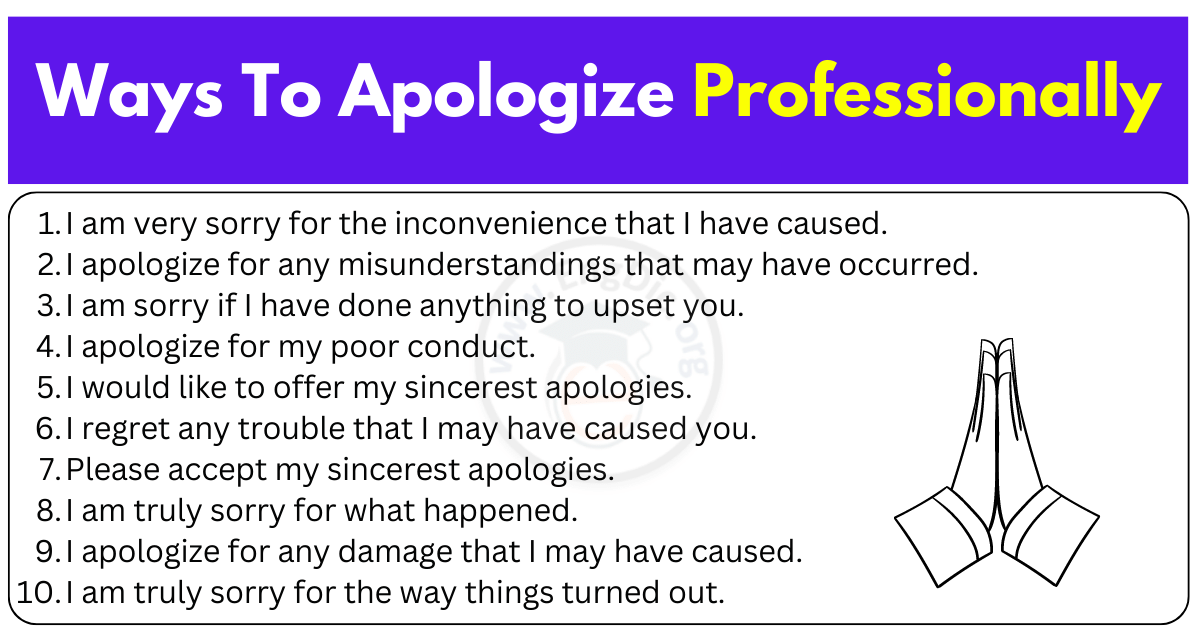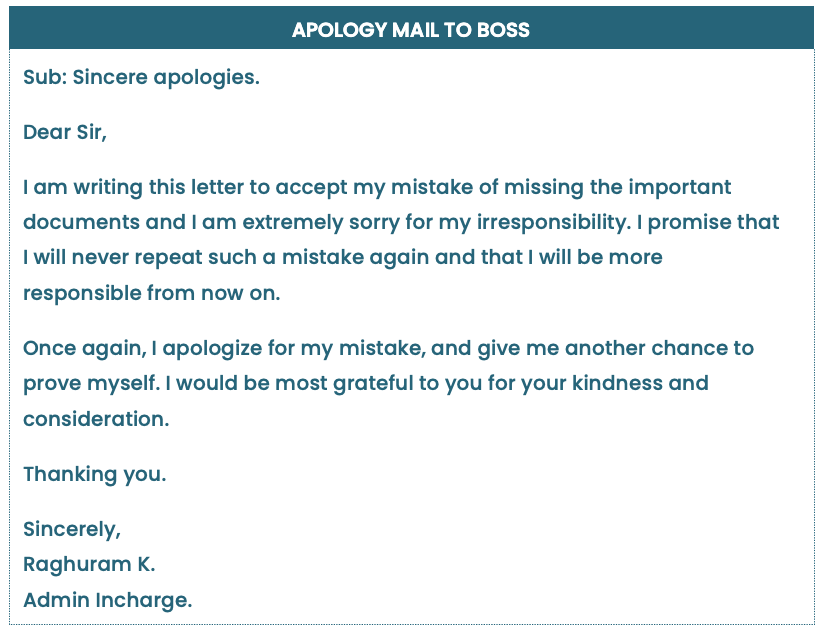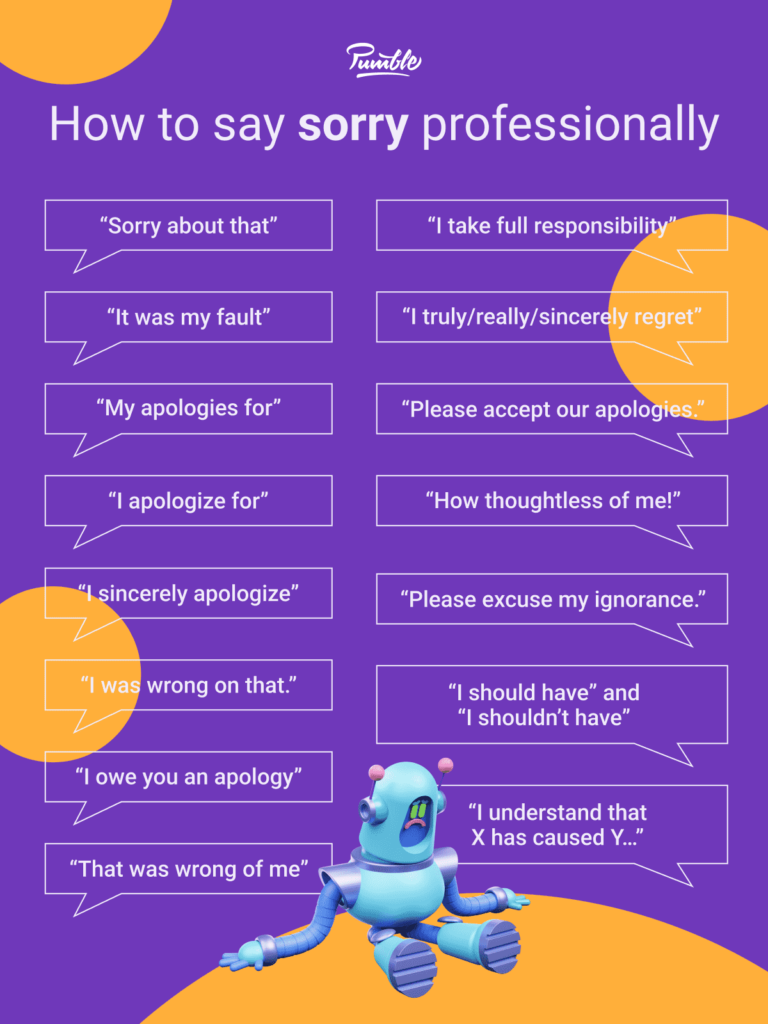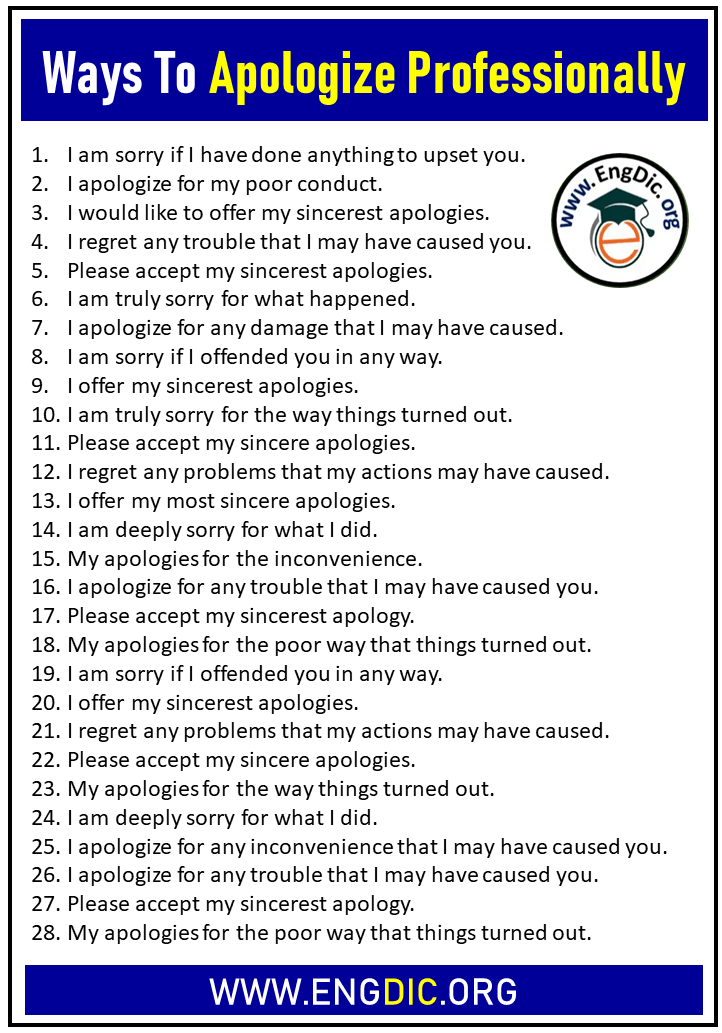How To Say I Apologize Professionally In An Email

In today's professional landscape, a well-crafted apology can be a crucial tool for maintaining relationships and repairing trust. However, knowing how to express remorse effectively in writing, especially within the often-impersonal realm of email, can be challenging. Mastering the art of the professional email apology can significantly impact career trajectory and company reputation.
This article delves into the intricacies of composing effective apology emails, providing actionable strategies to navigate workplace missteps with grace and professionalism. We will explore key elements of a sincere and impactful apology, highlighting essential phrases and avoiding common pitfalls that can undermine your message. We will explore how to communicate genuine regret and outline steps for remediation, all within the concise and efficient format of an email.
Understanding the Anatomy of a Professional Apology Email
The core elements of a successful apology email include acknowledging the mistake, expressing remorse, taking responsibility, outlining corrective action, and reassuring future performance.
Failing to address all these points can leave the recipient feeling unsatisfied, potentially exacerbating the situation. Each element must be carefully considered and tailored to the specific context of the error.
Acknowledging the Mistake
Start by directly and clearly stating the mistake you made. Avoid ambiguous language or vague allusions that could be misinterpreted. Be specific about what occurred and its impact.
For example, instead of saying "I understand there was an issue," try "I understand I missed the deadline for submitting the quarterly report, which resulted in a delay for the team."
Expressing Remorse
Convey genuine regret for your actions. Sincerity is paramount; avoid sounding insincere or dismissive. Use phrases like "I am truly sorry" or "I sincerely apologize" to communicate remorse.
According to a study by the Harvard Business Review, authenticity is key to rebuilding trust after a mistake. Be genuine and empathetic.
Taking Responsibility
Explicitly state that you are taking responsibility for your actions. Avoid making excuses or blaming others. Even if extenuating circumstances contributed, owning your part is essential.
Phrases like "I take full responsibility for this oversight" or "This was my error, and I accept the consequences" demonstrate accountability.
Outlining Corrective Action
Detail the steps you are taking to rectify the situation and prevent similar mistakes in the future. This demonstrates your commitment to learning from the experience. Be specific and realistic about your planned actions.
For example, "I have already submitted the report and am working to ensure all future deadlines are met by implementing a new tracking system."
Reassuring Future Performance
Reassure the recipient that you are committed to improving and avoiding similar errors in the future. This helps rebuild confidence in your abilities.
Phrases like "I am committed to learning from this experience and ensuring it doesn't happen again" or "I value my role here and will work diligently to regain your trust" can be effective.
Common Pitfalls to Avoid
Several common mistakes can undermine the effectiveness of an apology email. Avoid these pitfalls to ensure your message is well-received.
Do not blame others. It can be tempting to shift blame, but this will only damage your credibility. Do not make excuses. Excuses sound like justifications and diminish the sincerity of your apology.
Don't offer a non-apology. "I'm sorry if you were offended" is not an apology. Avoid being vague. Be specific about your mistake. Do not use overly formal language. This can come across as insincere.
Crafting the Perfect Subject Line
The subject line of your email is crucial for ensuring it is opened and read. Be clear and direct. For example, "Apology for [Specific Issue]" or "Regarding [Project Name] - Sincere Apologies."
A clear subject line demonstrates transparency and allows the recipient to quickly understand the purpose of the email.
The Impact of a Well-Crafted Apology
A sincere and well-written apology can have a significant positive impact on your professional relationships. It can rebuild trust, maintain goodwill, and prevent further damage to your reputation.
According to a study published in the Journal of Applied Psychology, apologies can significantly reduce feelings of anger and resentment. Effective apologies can lead to better working relationships and increased productivity. Remember, taking ownership of your mistakes fosters respect and improves team morale.

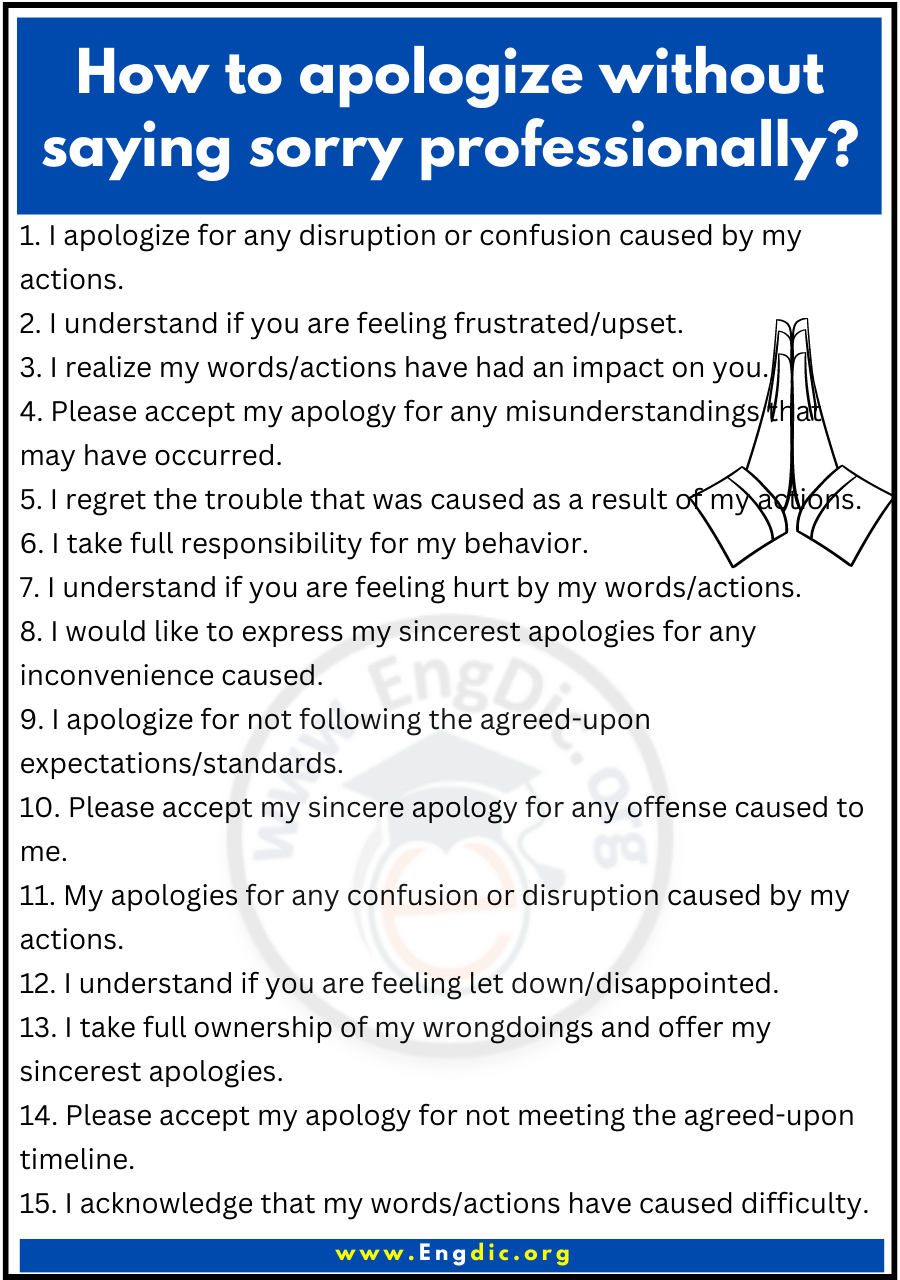

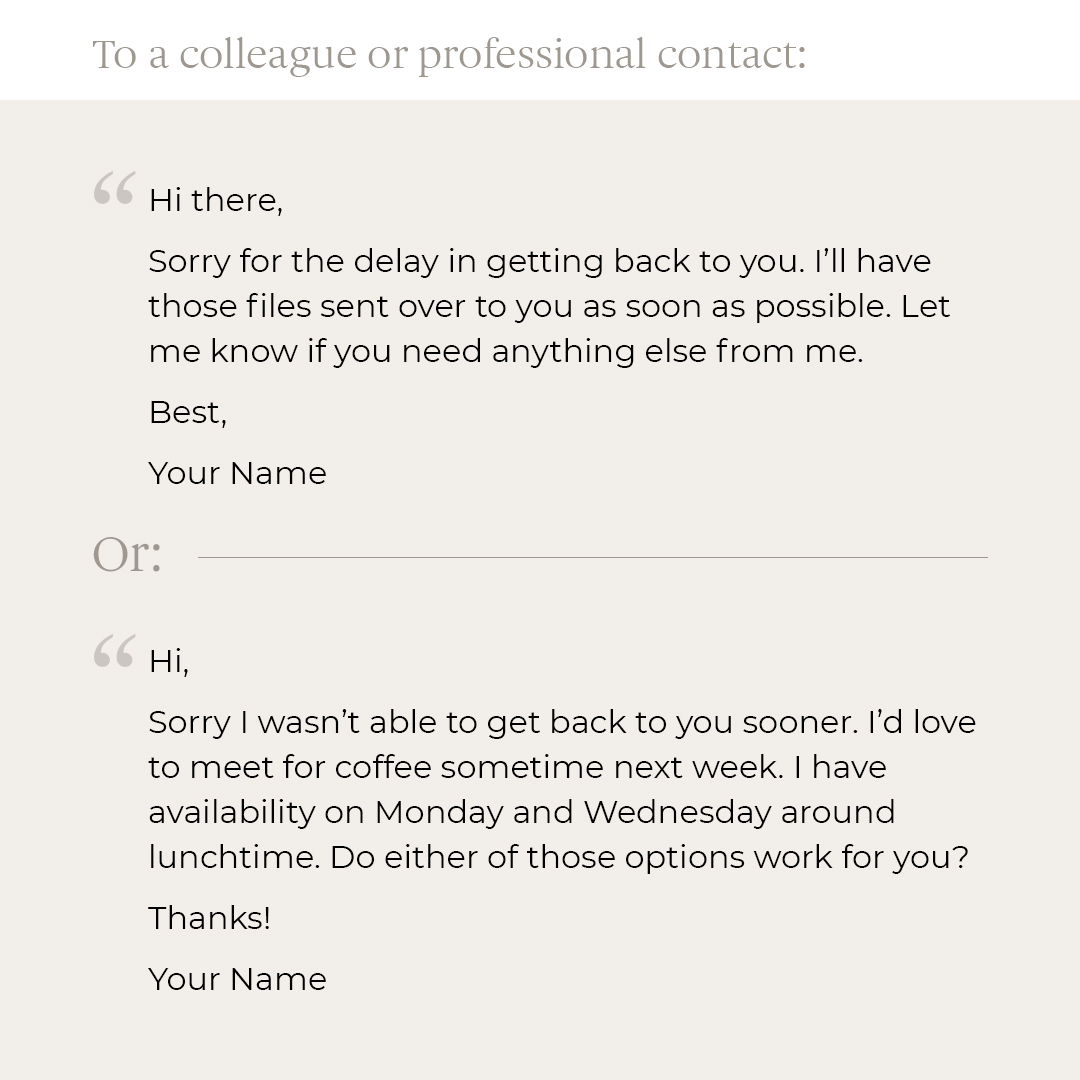


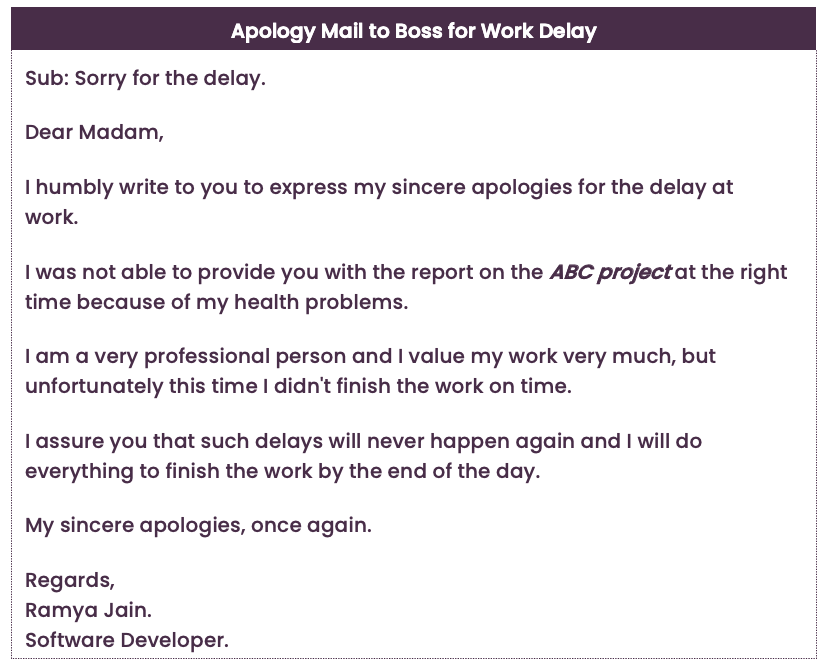
![How To Say I Apologize Professionally In An Email How to Apologize Professionally In an Email [+ Templates] | Fellow.app](https://fellow.app/wp-content/uploads/2022/06/How-to-Apologize-In-an-Email.jpg)
